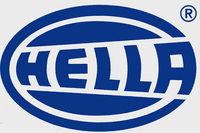Hella Energy Management Systems Increase Car Features, Fuel Economy
 |
- SEE ALSO: ALL HELLA ARTICLES
DETROIT, MI. October 21, 2008: Hella KGaA Hueck & Co., a global tier-one automotive supplier, knows that American consumers expect their fuel-efficient automobiles to be more than small “econo boxes.”
Hella is showcasing several energy management technologies at Convergence 2008, Oct. 20-22 at Detroit’s Cobo Center, that address the needs of automakers and consumers alike.
With Hella’s energy management portfolio, automakers can offer higher feature content in smaller vehicles, without increasing the size of the battery and at the same time reduce fuel consumption.
“The spike in fuel prices during 2008 caused many American car buyers to downsize from their larger vehicles, but consumer preference surveys have shown that people want more fuel-efficient cars, not just smaller ones,” noted Dr. Martin Fischer, president of Hella Corporate Center USA. “Conversely, auto manufacturers need to avoid the trap of thinking that new small car buyers are willing to forfeit the features they have become accustomed to in larger vehicles.
“Small cars don’t have to have fewer features to save fuel. With the proper energy management devices, smaller vehicles can have much of the luxury equipment that American consumers want and manufacturers can profitably build.”
The Hella executives noted that by the middle of the next decade, due to federal mandates, the auto industry will be required to make vehicles averaging 31 percent better fuel economy than today’s models.
Automakers also must contend with pending national and state legislation to reduce carbon dioxide (CO2) emissions. For years, Hella has worked intensively with its customers and partners to develop strategies for improving fuel economy.
Many of Hella’s energy management technologies already are on vehicles in Europe and include adaptive cruise control, automatic start-stop controls, battery sensors, voltage stabilizers, air-conditioning sensors and lighting systems. No single product will provide “the solution,” according to Fischer. Instead, the answer is integrating systems that will in turn lead to overall improvements in fuel economy.
Taking a holistic approach to energy management, Hella’s portfolio of fuel-efficient and CO2-reducing technologies on display at Convergence 2008 includes:
- Adaptive Cruise Control (ACC): Now on the Chrysler 300, ACC detects the relative speed and distance to vehicles in front and automatically adjusts the car’s speed. This device has trimmed fuel consumption and CO2 emissions by one percent.
- Automatic Start-Stop Control: A fuel-saving device introduced in hybrid vehicles, the automatic start-stop control turns off an engine during stops at traffic lights or traffic jams and quickly restarts the motor when it’s time to move. In normal city-highway driving, fuel consumption is reduced by about five percent. In city driving, up to a 20 percent boost in fuel economy is possible. Primary enablers for the system include a Battery Condition Sensor and Medium Power Voltage Stabilizer. The stabilizer is a direct current converter that protects the vehicle’s sensitive electronic systems from powering down during an engine restart.
- Demand-Driven Fuel Pumps: Operating as demanded by engine requirements, these fuel pumps reduce electrical-system load by up to 100 watts and save 0.5 grams of CO2 per mile.
- Electric Vacuum Pumps: More efficient than conventional belt-driven pumps, this device provides a vacuum boost during the vehicle’s warm-up phase. It switches off as soon as the engine reaches its operating temperature, reducing CO2 emissions by 4.0 to 6.4 grams per mile.
- Electronic Pedal Sensors: Detecting driver intentions, the electronic pedal sensor can help cut CO2 emissions by 16 to 24 grams per mile.
- High Intensity Discharge (HID) Light Modules: Using an arc between two electrodes rather than a filament to create light, HID modules have the power rating of a conventional 38-watt bulb, but actually provide more light than a 55-watt bulb. HID lighting systems consume less energy, trimming CO2 emissions. They are mercury free and contribute to sustainable environmental protection.
- Fuel-Quality Sensor: Ensuring that gasoline or diesel fuel is injected only as is needed to start the engine, this sensor can reduce emissions of up to 30 grams of CO2 per vehicle start.
- Intelligent Battery Sensor (IBS): The size of a postage stamp, the sensor is a key energy management contributor. It tracks energy output from numerous electrical devices to prevent total battery discharge and optimize the charging process. IBS helps reduce energy consumption and saves approximately 2.4 grams of CO2 per mile. IBS and Hella’s Voltage Stabilizers were integrated with other systems on the BMW 1 Series in Europe, boosting the car’s fuel economy up to 24 percent, while trimming emissions by 21 percent.
- LED Daytime Running Lights (DRLs): DRLs are designed to increase the visibility of a vehicle when driving during daylight hours. LED (light emitting diode) DRLs provide an energy savings of 95 percent compared to conventional lighting and thus are helpful in reducing vehicle CO2 emissions.
- Oil Quality Sensor: Called the PULS (packaged ultrasonic level sensor), Hella’s second-generation oil sensor is standard equipment on a number of European vehicles. It helps extend oil life, allowing for a reduction of about 4 grams of CO2 per mile, while permitting automakers to develop effective engine-management systems to improve fuel efficiency.
- Xenon Headlamps: Equipping a vehicle with a combination of 35-watt Xenon headlights and halogen brake lights can achieve energy savings of up to 25 percent.
“By model years 2011 through 2015, cars must achieve 35.7 miles per gallon while the standard for trucks rises to 28.6 mpg,” Fischer said. “The good news is that Hella has proven products that can boost fuel economy today.”


